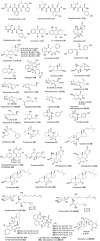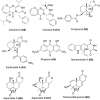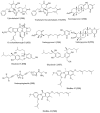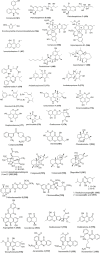Marine Fungi: A Source of Potential Anticancer Compounds
- PMID: 29354097
- PMCID: PMC5760561
- DOI: 10.3389/fmicb.2017.02536
Marine Fungi: A Source of Potential Anticancer Compounds
Abstract
Metabolites from marine fungi have hogged the limelight in drug discovery because of their promise as therapeutic agents. A number of metabolites related to marine fungi have been discovered from various sources which are known to possess a range of activities as antibacterial, antiviral and anticancer agents. Although, over a thousand marine fungi based metabolites have already been reported, none of them have reached the market yet which could partly be related to non-comprehensive screening approaches and lack of sustained lead optimization. The origin of these marine fungal metabolites is varied as their habitats have been reported from various sources such as sponge, algae, mangrove derived fungi, and fungi from bottom sediments. The importance of these natural compounds is based on their cytotoxicity and related activities that emanate from the diversity in their chemical structures and functional groups present on them. This review covers the majority of anticancer compounds isolated from marine fungi during 2012-2016 against specific cancer cell lines.
Keywords: cytotoxic compounds; deep sea fungi; mangroove associated fungi; marine fungi; sponge associated fungi.
Figures






References
Publication types
LinkOut - more resources
Full Text Sources
Other Literature Sources

